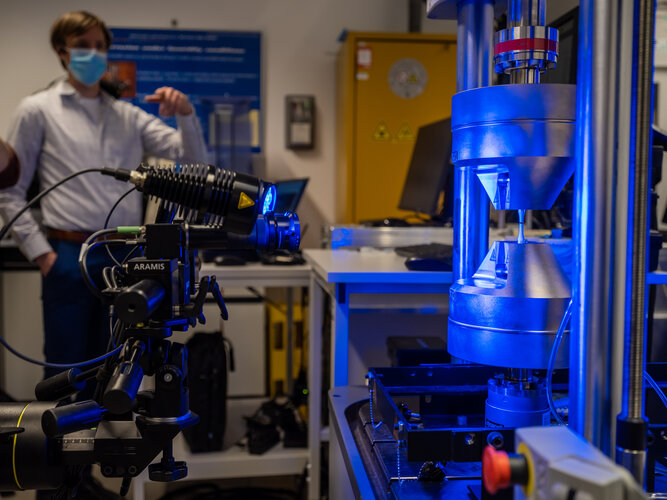ESA engineers need to be certain of the strength and tensile behaviour of candidate materials for coming space missions – so they pull them apart.
This tensile testing machine (otherwise known as a universal testing machine) does exactly that: a test sample is placed between its two sets of ‘jaws’ and subjected to a steadily increasing pull force, until the moment of fracture.
The applied force and resulting deformation can be tracked precisely using a photogrammetry system – note the camera to the left – while the final fracture pattern becomes the subject of detailed analysis.
“Being able to measure the fundamental properties of a wide variety of materials is essential to good design, modelling and testing of spacecraft components,” explains ESA Materials and Processes engineer Nathan Bamsley. “Testing in an accurate and repeatable manner using calibrated equipment that you trust is absolutely vital.”
This tensile testing machine is part of ESA’s Materials and Electrical Components Laboratory, one of 35 technical laboratories based at the European Space Technology and Research Centre, ESTEC, based at Noordwijk in the Netherlands.
Made up of dozens of dedicated experimental facilities and hundreds of instruments overall, the Materials and Electrical Components Lab is dedicated to guaranteeing an optimal choice of materials, processes and electrical components for ESA missions and projects, bearing in mind the unique environmental challenges involved around designing for space operations.
A designated certification authority for materials and processes, the Lab is open to customers from all backgrounds for testing work. To find out more about working with ESA facilities, check our new website on the duties and resources of ESA’s Directorate of Technology, Engineering and Quality.



 Image:
On the pull
Image:
On the pull